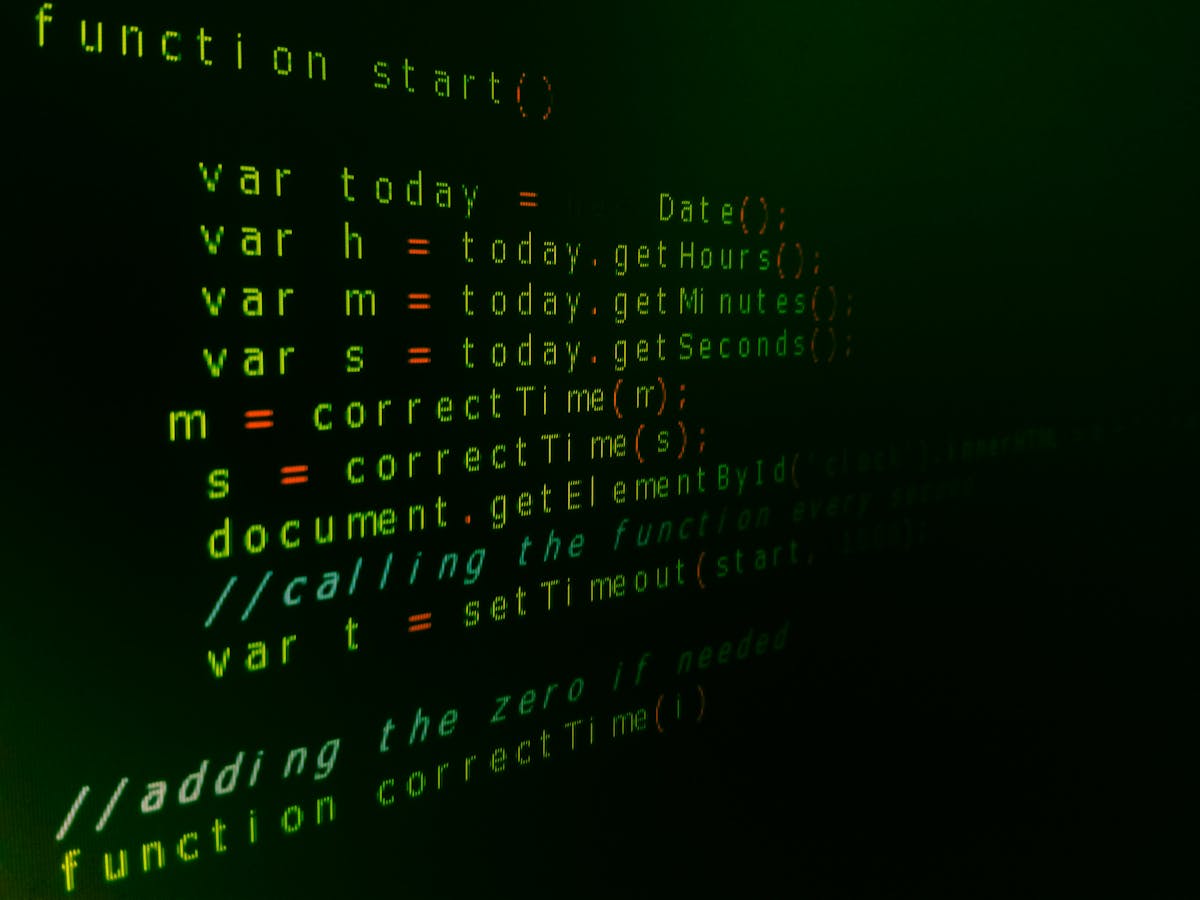Everything About Full-Stack Development: Exploring Its Duty in Efficient Software Application Design
Full-stack development has actually arised as a foundation of modern software program engineering. By incorporating front-end and back-end modern technologies, it develops cohesive web applications. This approach not only improves user interfaces yet additionally enhances server-side performance. As the demand for adaptable developers increases, understanding the subtleties of full-stack development comes to be important. What exactly does this involve, and what implications does it hold for the future of software program design?
Understanding Full-Stack Development
Full-stack development includes the full spectrum of internet growth, incorporating both front-end and back-end innovations. This multidisciplinary strategy permits programmers to create fully practical web applications, taking care of whatever from customer interface design to web server management. Full-stack developers have a varied ability set, enabling them to navigate numerous layers of an application, consisting of databases, server-side logic, and client-side interactions.Understanding the full-stack growth process includes acknowledging the value of individual experience and application efficiency. Designers should consider just how these aspects connect, making sure a seamless experience for users. Furthermore, full-stack advancement fosters collaboration among groups, as programmers can connect successfully throughout self-controls. aether group dubai. This convenience not just improves process but also improves problem-solving abilities. In a significantly electronic globe, the need for full-stack developers continues to grow, highlighting their critical duty in the software design landscape
Secret Technologies in Full-Stack Advancement
The landscape of full-stack growth is specified by a range of key innovations that encourage programmers to develop durable internet applications. On the front end, popular frameworks like React, Angular, and Vue.js promote the production of vibrant interface. These tools allow designers to boost and create responsive designs individual experiences.On the backside, Node.js, Django, and Ruby on Rails are widely made use of for server-side advancement, enabling reliable handling of data source interactions and server logic. Additionally, databases such as MongoDB and PostgreSQL are vital for data storage space and retrieval.APIs are crucial in attaching the front end and back end, enabling seamless information exchange. In addition, variation control systems like Git are important for handling code adjustments and partnership among growth groups. Collectively, these technologies create an extensive toolkit that makes it possible for full-stack developers to provide high-grade applications successfully.
Advantages of Being a Full-Stack Programmer
An occupation as a full-stack programmer offers many benefits that interest both amateurs and skilled specialists. One considerable benefit is the versatility to work on both front-end and back-end technologies, permitting designers to create all-inclusive services. This twin ability improves analytical abilities, allowing them to deal with problems across the entire pile efficiently.Additionally, full-stack programmers typically appreciate greater task possibilities, as their varied abilities make them useful assets to companies seeking to improve growth processes. The ability to comprehend and manage whole jobs cultivates improved cooperation within groups, leading to a more cohesive workflow.Moreover, full-stack developers often tend to regulate greater salaries because of their substantial expertise. Continuous knowing is another perk, as they often involve with different innovations and structures, keeping their skills relevant. Inevitably, the duty of a full-stack designer is vibrant and gratifying, offering a fulfilling occupation course for those who accept it.
The Full-Stack Advancement Refine
While navigating via the full-stack growth process, designers participate in a collection of structured stages that guarantee the development of robust applications. Demands event is crucial, as it lays the foundation for recognizing user needs and project goals. This is complied with deliberately the application architecture, where the total framework, technologies, and structures are chosen to meet the requirements.Next, designers change to the front-end and back-end advancement phases, where they develop interface and server-side logic, specifically. Testing is an integral phase that verifies performance, performance, and safety, addressing possible bugs and problems before deployment.Finally, the deployment phase entails introducing the application and monitoring its performance in a real-time atmosphere. Throughout this feedback, iteration and procedure loopholes are necessary, enabling continual enhancement and adaptation to transforming demands. This organized technique facilitates the advancement of effective, scalable, and maintainable applications.

Partnership Between Front-End and Back-End Teams
Reliable cooperation in between front-end and back-end groups is vital for successful full-stack growth. Solid interaction, using common devices and technologies, and dexterous cooperation methods can substantially enhance workflow and project end results - niels denekamp. By promoting a cohesive working relationship, groups can much better align their initiatives and deliver a smooth user experience
Significance of Communication
Successful partnership between front-end and back-end groups depends upon clear and regular communication. This communication is vital for lining up project assumptions, objectives, and timelines. When front-end designers understand the back-end architecture and vice versa, they can develop much more natural and useful applications. Regular conferences and updates help with the exchange of concepts, allowing teams to deal with possible concerns early in the advancement procedure. In addition, efficient communication promotes a joint atmosphere, motivating team participants to share insights and comments, eventually causing innovative options. By focusing on communication, teams can lessen misunderstandings, enhance workflows, and enhance overall performance. Subsequently, the duty of communication in full-stack development can not be overstated; it functions as the foundation of effective software program engineering projects.
Shared Equipments and Technologies
Clear interaction sets the stage for utilizing shared devices and technologies successfully in full-stack growth. This collaboration between front-end and back-end teams rests on the fostering of integrated devices that improve operations and enhance performance. Variation control systems, such as Git, assist in seamless partnership by permitting programmers to track adjustments and merge code efficiently. In addition, APIs work as an important bridge, enabling front-end and back-end elements to connect properly. In addition, shared development environments, like Docker, foster consistency, enabling teams to function in a consistent arrangement. By leveraging these shared tools, teams can lessen misunderstandings and quicken the growth process, inevitably resulting in even more natural software services that fulfill job demands and customer expectations.
Agile Collaboration Practices

Usual Obstacles in Full-Stack Growth
What obstacles do full-stack designers come across as they navigate the complexities of both front-end and back-end technologies? One prominent difficulty is the rapid advancement of devices and frameworks, which requires consistent understanding and adaptation. Programmers have to stay updated with both front-end collections, such as React or Angular, and back-end innovations like Node.js or Django, which can cause ability voids or knowledge overload.Additionally, full-stack programmers usually have problem with work monitoring because of the comprehensive array of obligations. Balancing jobs in between interface layout, server-side logic, and database management can result in time restrictions and task delays.Collaboration and communication within teams also existing difficulties, as full-stack designers should connect the gap between front-end and back-end groups, making certain positioning on task objectives. Debugging throughout multiple layers of the stack can complicate problem resolution, taking in valuable time and resources.
The Future of Full-Stack Advancement
Innovation in innovation promises to form the future of full-stack development significantly. As firms significantly embrace cloud computer and microservices styles, the need for full-stack programmers who can flawlessly incorporate front-end and back-end modern technologies is expected to grow. The increase of synthetic knowledge and device knowing will likely affect growth practices, enabling extra effective coding and automated screening processes.Moreover, the development of no-code and low-code systems might redefine the function of full-stack developers, enabling them to concentrate on higher-level style and design while streamlining routine tasks (aether group dubai). This Learn More Here change might cultivate cooperation in between technological and non-technical employee, broadening the extent of full-stack development.Additionally, the emphasis on cybersecurity will cause the combination of protection techniques within the full-stack advancement lifecycle. Overall, the future of full-stack growth shows up brilliant, identified by continuous understanding and adjustment to an ever-changing technical landscape
Frequently Asked Inquiries
What Educational Background Is Preferred for Full-Stack Developers?
The preferred instructional history for full-stack developers often consists of degrees in computer scientific research or software program engineering. However, lots of effective developers also emerge from coding bootcamps or self-taught experiences, highlighting practical abilities over official education and learning.
Just How Do Full-Stack Programmers Remain Upgraded With New Technologies?
Full-stack developers remain upgraded with new modern technologies through constant discovering by means of online programs, participating in workshops and meetings, involving in community forums, complying with industry blog sites, and trying out new tools and frameworks in individual tasks.
Is Full-Stack Development Suitable for Beginners?
Full-stack development can be ideal for novices, as it offers an extensive understanding of both front-end and back-end innovations. The discovering contour might be steep, needing devotion and regular practice to understand various skills.
What Are Usual Profession Paths for Full-Stack Developers?
Typical occupation paths for full-stack programmers include functions such as software application designer, web programmer, technological lead, and job supervisor. Numerous additionally specialize in details technologies or move into relevant areas like item administration or user experience style.
Just How Does Full-Stack Development Differ From Standard Software Development?
Full-stack advancement includes both front-end and back-end tasks, enabling programmers to take care of entire jobs. In contrast, traditional software program have a peek at this website development typically involves specialized duties, concentrating independently on either client-side or server-side elements of applications. Full-stack advancement incorporates the complete range of internet growth, incorporating both front-end and back-end modern technologies. Full-stack designers have a wide-ranging ability collection, enabling them to navigate numerous layers of an application, consisting of data sources, server-side logic, and client-side interactions.Understanding the full-stack development process entails identifying the relevance of individual experience and application performance. Furthermore, full-stack growth cultivates collaboration among groups, as programmers can communicate properly across techniques. The landscape of full-stack growth is specified by a variety of essential technologies that empower programmers to construct durable internet applications. While navigating through the full-stack growth process, programmers engage in a collection of structured phases that assure the creation of robust applications.